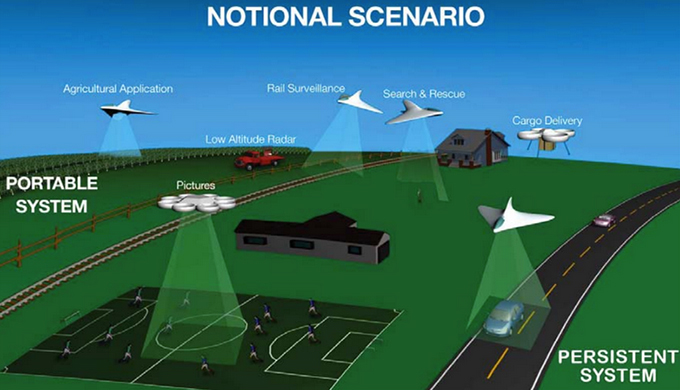How NASA Plans to Open ’Air Highways’ for Drones
Source: motherboard.vice.com
If Amazon and Google are going to take their drone delivery operations public, what’s going to ensure they do it safely? Air highways and specialized drone corridors designed by NASA scientists, apparently.Even if the Federal Administration Administration isn’t sold on the idea of commercial drones flying throughout the country, NASA is.
The agency has quietly been working on an air traffic control system for drones, and its head scientist says that he’s pretty sure he can make it safe for the machines to fly in low altitude airspace. In fact, he envisions specialized highways, "lanes," and even corridors for commercial drones to operate in.
"We might have highways in the sky, with a bunch of [drones] going in a similar direction," Parimal Kopardekar, the NASA scientist leading the project, told me. "It’s going to be a function of density and demand in a particular airspace, but if lots of them are going in one direction, they might have that corridor to themselves."

The way Kopardekar talks about drones couldn’t be any more different from how the FAA has spoken about them in my experiences with the agency; Kopardekar sees the technology as having a bright future and spoke frankly about the potential benefits of drones.
The FAA, meanwhile, has spent much of the last several years slowing down the industry, threatening those who are flying commercially, and suggesting that delivery drones might never be approved by its still as-of-yet unreleased regulations.
"There are a lot of applications of UAVs in disaster relief, agriculture, and the delivery of all kinds of things that are a really worthy civilian use," he said. "You can think of deliveries for medical purposes to rural areas. I think we would like to figure out a way to make those happen."
So why, exactly, is NASA working on an air traffic management system while the FAA continues to send out cease-and-desist letters and fight lawsuits with drone pilots? Kopardekar says that NASA has long been a leader in developing air traffic control systems and says that he looks at his project as the "next frontier" in aviation research. He’s already been working closely with the FAA on what a drone air traffic control system looks like, and says that he hopes that, ultimately, the agency will adopt whatever he whips up.
I can’s say what’s best for their business or anything about their business models, but I can say we would like to help enable them.
Right now, the system is being developed mainly with computer modeling, and he’s hoping to have a full prototype ready within five years. That’s not the kind of timeline that most commercial drone operators would like to hear, but it seems pretty short when you consider the different factors the system is going to take into account.
NASA plans on mapping and including buildings and airports to create "geofences" that drones will automatically avoid (that’s how the "lanes" or corridors might work, too), it’ll integrate with existing air traffic control to alert drone pilots—or the autonomous drone software, depending on how it’s being operated—to low-flying planes, and it’ll take into account weather, wind, and other drone traffic to help determine the best, and safest, route for the drone.
Given all of those inputs, it seems like an almost impossible task, but Kopardekar says he’s seeking input from drone manufacturers and big time players like Google and Amazon (he wouldn’t confirm that the agency is definitely working with those two companies, though they seem like a safe bet) to learn more about how, exactly, they’d like to use their drones.
"I can’t say what’s best for their business or anything about their business models, but I can say we would like to help enable them," he said.
If this all sounds expensive, from a drone owner’s point of view, well, you might be right. Right now, the vast majority of commercial drone operators are flying small drones that don’t cost all that much—in order to communicate with an air traffic control system, some new sensors and software are likely to be necessary.
Kopardekar says his goal here is to create a system simple enough that the means to communicate with the air traffic control system won’t be prohibitively expensive, but it’s still too early to say how it’s going to work out.
"We don’t want to burden anyone, but there’s a difference between safety and inclusiveness, and those are both related to cost. The fundamental thing is to enable them in a safe manner," he said. "The requirements will be driven out of that. If we are safe, then in the longer term, things will be more efficient and cheaper."
Source: motherboard.vice.com






















